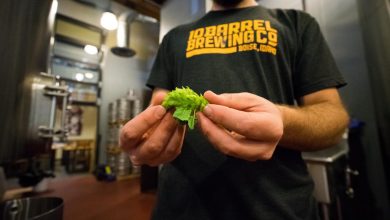Major Fermentation Problems Explained

If you are here then you must have already tried brewing beer at home or thinking about doing it. If you have not tried it yet, please read through carefully to know what problems you might face. But if you have already tried it, then it’s okay that your fermentation was not proper. It takes a few time before brewing a perfect mug. If you get the perfect mug on the first go, then enjoy yours. If not, don’t worry – you will.
As you now know, the most common problem with homebrewers is that the fermentation does not start. The reasons are several, and of course, there are solutions too. If it were your first time brewing beer at home, it’s completely normal. Not that you cannot get the perfect fermented brew on the very first try, but most of the time, it doesn’t happen. But you have to be ready for failure a few times. Read through the complete article to know what you should do and what you can do if fermentation does not start or it gets stuck.
Yeast is the most important ingredient of the fermentation process. If the fermentation isn’t good, the beer won’t be good. There are several factors that affect the fermentation process and explain why your fermentation never starts or gets stuck.
Here are some problems which you will face while fermenting.

The Fermentation Never Started
There are several reasons as to why the fermentation never starts. No problem comes without a solution so you will also find the solution along with the problems.
Problem 1: No Yeast
If there is no yeast, there will be no fermentation. Do you remember putting in the yeast?
Solution– Make sure that you add the required amount of yeast, as only then will the fermentation will take place.
Problem 2: Health of Yeast
This is very important, as the whole fermentation revolves around the yeast. The yeast you are using must be healthy and alive. You may have put in the yeast which was sitting in the cupboard, waiting to be used, but it was already gone bad or dead. Though the yeast is usable for up to two years, the storage conditions may affect its life. The bad yeast won’t work at all. You may keep waiting for more than the required hours, but it won’t bubble up.
Solution– Whenever you are ready for the fermentation, get a new packet of yeast. Make sure that the yeast is active, and then only use it. Here, it is also advised to put in the right quantity of yeast by using a measuring scale or a calculator. If there is not enough quantity of healthy yeast, you can forget your beer.
Problem 3: Killing your Yeast
You cannot sprinkle dry yeast in a wort. It needs to be rehydrated, or else it will get stuck on the edges and will be of no use. But if you rehydrate it at a very high temperature, the yeast will die, and of course, there will be no fermentation. Even if you use liquid yeast, you need to ready it for the use.
Solution– Every vial of yeast specifies clearly at what temperature the yeast will properly rehydrate. Every kind of yeast strain has a different temperature which will be ideal for it. The best thing you can do is to rehydrate your yeast in plain water. If you use liquid yeast, it must be readied to a stage where it will work. Both the dry and liquid yeast do not start working on their own but require some warming up. Liquid yeast, if kept in the refrigerator, must be warmed up a bit.
Problem 4: Temperature of the Fermenter
If the temperature of the fermenter does not suit the yeast, it will deny working. The temperature plays a vital role in the overall brewing process. If it is too warm, it will kill the yeast. If it is too cold, the yeast will freeze. So what to do?
Solution– The temperature of the fermenter must be an ideal temperature – neither too hot nor too cold. Though it is recommended to rehydrate the yeast in plain water, even if you use the hot water and then put it in a fermenter which is too cold, the temperature fluctuation will shock the healthy yeast. They will take way too much more time to start the fermentation as they would have taken normally because so much of their time wasted in adjusting to the environment. The too cold temperature can also kill the yeast. Then, you will have no other option but to pitch new yeast.
Problem 5: Improper Sterilization
The sterilization is a problem that can affect the brewing process at every stage. The sanitizer or soap which you use for cleaning the containers that are going to be used for brewing the beer may also affect the fermentation. It does not mean at all that you should not use them. But the soap, detergent, or sanitizer residue in the containers may kill the yeast. Even the cleaned utensils can have these residues.
Solution– Sanitize your containers the way you do them. But before the brewing, use cold water to wash the utensils again. It is only to make sure that the residue is cleared. Even after using the cold water, the fermentation may not start. But it is not your fault. The free bacteria in the atmosphere may also affect fermentation. This is something you cannot help, but try to keep the surroundings clean in which you are going to brew the beer. But you will have to pitch the new yeast in this case.

The Fermentation Started, But Very Slowly
Your fermentation may have a slow start. Again, the reasons may be several, and they have a solution as well. Go through it, and find out how to solve yours.
Problem 1: Fermentation isn’t slow, but extra fast
Here, the type of yeast strain you used is the problem. The fermentation took place before its time, as you pitched strong yeast or a large quantity of yeast. It does not taste good though; the beer will be drinkable, but will not taste right. So what you are thinking as a slow start is actually a complete process which took place before the time expected. Also, if the fermenter was too warm, the yeast will function at a very fast pace, which isn’t good either.
Solution– Try to keep the fermenter at a temperature which is not too warm or too cold. The type of yeast strain you used is also important because the whole batch of your beer will become tasteless with this quick fermentation.
Problem 2: Type Of Yeast Strain
If your fermentation does not start in a day or two, check the vial of the yeast and see what type of yeast strain you used. There are several kinds of yeast strain available in the market. A slow variety yeast strain will commence its work a bit later.
Solution– If you are using a slow variety yeast strain, then wait for the time specified on the packet. Else, you can try using a different yeast strain next time.
Problem 3: Temperature
As it was specified earlier, temperature plays a very important role in fermentation. The cool temperature of the fermenter can make an unfavorable atmosphere for the yeast.
Solution– During the night as well, make sure that the temperature doesn’t fall down. It should be constant.
Problem 4: Amount of Yeast
Too little yeast will of course cause the trouble.
Solution– First of all, proper equipment is required when brewing a beer especially the one for the measurement. If the amount of yeast is too less, it will try its best, and the fermentation will start with the active and healthy yeast, but it will slow down, as it is not enough for the complete process of fermentation.

The Stuck Fermentation
It is again a very common problem which is faced by many homebrewers. The fermentation starts very well but it gets stuck mid-way. There is no need for you to be worried. Just read through, and you will get over it.
Problem 1: Temperature
As it was said earlier, a fall in temperature is the primary cause which causes the yeast to go to a sleeping position, and they stop working.
Solution– Temperature is vital, and you are advised here to keep the temperature constant throughout the fermentation. You can heat it up a bit so that the yeast will get back into the action mode.
Problem 2: Yeast Type
The type of yeast strain decides the speed of fermentation. So make sure that fermentation has actually stopped before emptying the vessel down the sink. Maybe the reason is the slow variety yeast strain which must have started after a few more hours if only you had not drained it.
Solution– Check the pack of the yeast and read how much time it usually takes to start the fermentation process. After waiting for the specified time, if the process does not start, pitch new yeast. You can also try using another yeast strain next time.
Problem 3: Dormant Yeast
Because of so many reasons, the yeast may go dormant or fall into a nap.
Solution– The need is to wake up the yeast. You can swirl the vessel gently or maybe a bit strongly so that the yeast will spring back into action. Also, if fermentation has stalled, transferring the yeast to another vessel will wake them up. Transferring the yeast to another vessel is also recommended, as the detergent or soap residue in the existing vessel may have killed the healthy yeast who was working.
Problem 4: The Yeast is Adamant
Even after all the above solutions, the yeast is adamant that it will not work.
Solution– Add some more yeast. If the yeast does not want to get into action, it is advised to put into some active yeast which will do the work for you. But you cannot add the yeast into the stalled fermentation directly. Prepare them separately, and when you are convinced that it is ready, put it in the mixture. As these yeasts were in a very active stage, they will start working very quickly and will take over the task from the earlier population where it was left.

There are many problems which come in the later stage. But most of the homebrewers complain about the fermentation because if the fermentation will not start, there will be no beer, and thus, no other problems.
From the above problems, you can chalk out a few things which primarily affect the fermentation process. Temperature is one of them. The best brew will require a constant temperature during the whole process. If it fluctuates too much, you can forget about the tasty beer. Then comes the amount of yeast and the type of yeast. The importance of yeast does not require any explanation as to why it is important. A proper amount of yeast according to the quantity you are brewing is important. Also, the yeast strain is vital.
Proper rehydration of yeast is also important. Plain water is recommended here. The temperature of the wort must also be favorable for the yeast. It must not be too cold or too warm.
And the last thing is sterilization. Soap or detergent residue is the enemy of fermentation. Also, improper sterilization affects the brew at every stage. So clean your utensils properly.
These are the problems and their solutions which homebrewers face at least once. Some of these you must have already faced while brewing. So don’t panic. Try harder and follow the instructions. Read the article completely, find out your mistake, and start brewing again. Keep these few things in mind, and you will brew the perfect mug this time.



